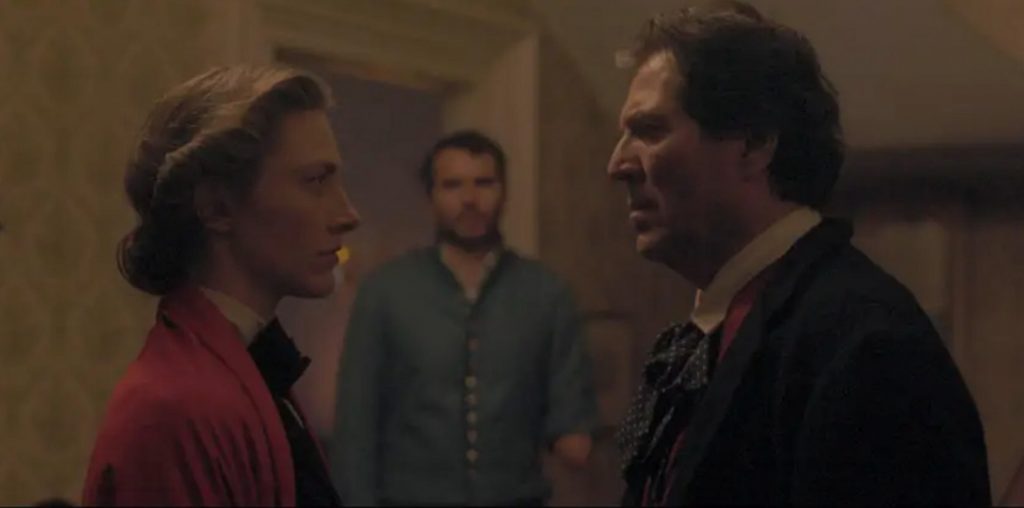
What a long strange shadow Adolph Hitler managed to cast in the course of his relatively brief life. Here we are well out of the century he shook and still we find ourselves standing in the darkness of that shadow, marveling at its madness, telling its story over and over as witnessed from different points of view.
The past year alone brought no fewer than three serious films on the subject. Max tracked the dictator from his days as a frustrated painter to the fateful moment of epiphany when he determined that “politics is the new art.” Roman Polanski resurrected his career with The Pianist the fact-based account of one man’s attempt to elude capture by Nazi forces occupying the Warsaw ghetto. And a 39-year-old filmmaker from the fatherland named Caroline Link took home a Best Foreign Film Oscar for another true story, the portrait of a Jewish family holing up in Kenya during the Second World War.
“Nowhere in Africa” might be described as “Schindler’s List” turned inside out. Merab Ninidze is a young lawyer who early on picks up hints of the horror about to descend upon his country. Without success, he attempts to convince his father and members of his wife’s family to emigrate. His warnings are dismissed, however, and in 1938 he leaves behind a life of privilege and most of the people he loves to get his wife and daughter to safety in a remote African village.
Julian Kohler plays the Mrs., a reluctant refugee who longs to return to her home even as the news from Germany becomes worse and letters from loved ones arrive with less and less frequency. Her role has a lot in common with Kathy Bates’ in “At Play in the Fields of the Lord”. Initially she’s repulsed by the backwardness of her new neighbors, in disbelief as to the harshness of her new life and adamant that her young daughter not mix too closely with the native kids.
As the young girl, Lea Kurka is the only one in the family for whom Africa is more home than the homeland. She befriends her barefoot contemporaries, climbs trees blissfully ignorant of the forces tearing her parents apart and forms a special bond with the family’s cook (Sidede Onyulo), a tall fellow with a bright smile who teaches her local ways and wisdom.
Link’s film offers an admirably understated study of the family’s constantly shifting desires, fears and allegiances. As one member assimilates, another rekindles longing for the old life or at least a chance to try life in the old country. Later, as hostilities draw to a close, roles take a number of reversals and surprise turns so that peace ironically poses as significant a threat to household unity as wartime.
Throughout the family’s years in Africa, news concerning the fates of friends and relatives is rare as desert rain and this is why I see the film as sort of an inverted variation on Spielberg’s. Both are about the same nightmare. In Spielberg’s, however, the characters live it. In Link’s, they’re forced to imagine it, to infer the terrible ends met by friends and family by piecing radio reports and scraps of censored mail into a picture almost impossible for the mind to grasp. To the director’s credit is her ability to suggest the horror experienced by millions in the faces of two people.
Against this backdrop, the movie gives us lovingly shot landscapes, portraits of extraordinary friendships, a great score, dialogue that only occasionally slips into history lessons, a number of memorably etched minor characters, a splendid performance by its youngest star and two mysteries: How could Hitler have been allowed to happen and why would anyone, particularly anyone Jewish, want to live in the country that made him possible?
History may never find an answer to the first. Everyone knows the answer to the second. The primordial pull of home. Because it touches on so universal a theme, the movie’s power and appeal prove universal too.

